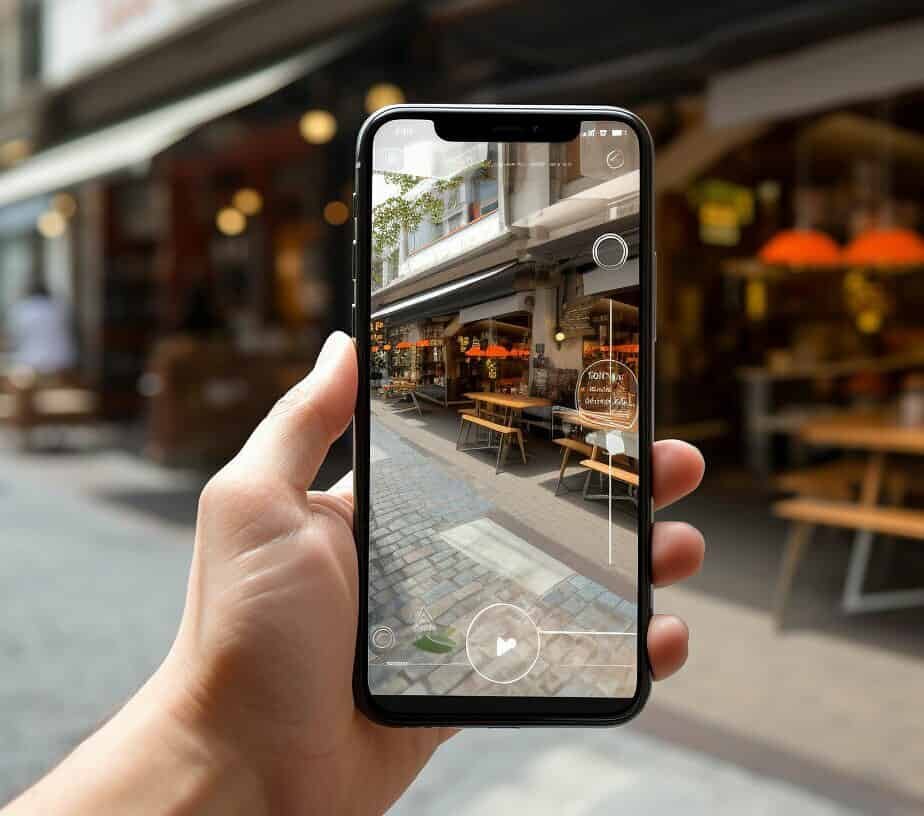Technology has come a long way, and with it, the way we interact with the world has changed. One such technology that has gained immense popularity in recent years is Augmented Reality (AR). It has revolutionized the way we view and experience our surroundings. However, creating AR experiences required technical skills, which made it inaccessible to many. But not anymore. Introducing No Code Augmented Reality (AR), the platform that simplifies the AR experience, making it accessible to everyone.
No Code Augmented Reality (AR) eliminates the need for programming skills, making it easy for anyone to create engaging AR experiences. With this platform, users can build AR without programming, making it a game-changer in the AR world.
What is No Code Augmented Reality (AR)?
No Code Augmented Reality (AR) is an AR development platform that allows users to create AR experiences without coding. Unlike traditional AR development platforms, No Code AR makes it easy for anyone to build AR without programming skills.
With No Code Augmented Reality (AR), users can create engaging AR experiences with a simple and user-friendly interface. No technical skills are required, and AR app development is made easy.
How Does No Code Augmented Reality (AR) Work?
No Code Augmented Reality (AR) platforms enable users to create engaging AR experiences without any coding. These platforms usually come with a user-friendly interface that simplifies the AR development process. Users can create AR experiences by simply dragging and dropping elements onto the AR scene, designing animations, and configuring interactions.
Creating AR experiences in No Code Augmented Reality (AR) platforms typically involves the following steps:
| Step | Action |
|---|---|
| Step 1 | Choose a template or design an AR scene from scratch. |
| Step 2 | Add 3D models, animations, and interactions to the AR scene. |
| Step 3 | Configure the AR experience properties, such as tracking, lighting, and sound effects. |
| Step 4 | Preview the AR experience on the development platform and make necessary adjustments. |
| Step 5 | Publish the AR experience to a compatible device or platform. |
No Code Augmented Reality (AR) platforms typically leverage technologies such as machine learning, computer vision, and cloud computing to simplify the AR development process. These technologies enable the platforms to provide features such as automatic scene tracking, object recognition, and real-time rendering, which would otherwise require technical skills to implement.
Examples of AR Experiences Created with No Code Augmented Reality (AR)
No Code Augmented Reality (AR) platforms can be used to create a variety of AR experiences, including:
- Interactive product demonstrations in the retail industry
- Virtual tours and exhibitions in the education industry
- Interactive games and entertainment experiences
- AR-enabled user manuals and instructions
- AR-enhanced event and marketing campaigns
These AR experiences can be published to compatible devices such as smartphones, tablets, and AR-enabled glasses, using platforms such as ARKit, ARCore, and Unity.
Benefits of No Code Augmented Reality (AR)
Using a No Code Augmented Reality (AR) platform for AR development comes with a number of benefits. Here are some of the most significant:
| Benefit | Description |
|---|---|
| No Technical Skills Required | One of the biggest benefits of using a No Code AR development platform is that you don’t need any technical skills or programming knowledge to build an AR experience. |
| Time and Cost Savings | Creating an AR experience without coding can save you time and money. By using pre-built templates and drag-and-drop interfaces, you can develop an AR experience in a fraction of the time it would take to build one from scratch with traditional AR development tools. |
| User-Friendly Interface | No Code AR development platforms typically have a user-friendly interface that makes it easy to create, edit, and publish AR experiences. This means that anyone can use them, regardless of their technical background or programming knowledge. |
| Customizable Templates | Many No Code AR development platforms offer customizable templates to help you get started with your AR experience. These templates can save you time and effort and can be tailored to your specific needs and requirements. |
In summary, using a No Code Augmented Reality (AR) platform can simplify AR development, reduce costs, and save time. With a user-friendly interface and customizable templates, anyone can create engaging AR experiences without needing any programming skills or technical expertise.
Use Cases for No Code Augmented Reality (AR)
No Code Augmented Reality (AR) has applications across various industries. Here are some use cases:
Retail
No Code AR design can be used to create immersive product experiences, allowing customers to see how products would look in real-life environments. This can lead to increased customer engagement and sales.
Education
No Code AR can be used to create interactive educational experiences, bringing textbooks to life and making learning more engaging and fun for students.
Entertainment
No Code AR can be used to create interactive movie posters and billboards, or even virtual treasure hunts and escape rooms. This can provide a unique and memorable experience for customers, and can be used as a marketing tool for businesses.
These are just a few of the many ways No Code Augmented Reality (AR) can be used. Its versatility and user-friendly features make it an accessible technology for anyone looking to create engaging AR experiences without technical skills.
Getting Started with No Code Augmented Reality (AR)
If you’re interested in creating AR experiences without coding, No Code Augmented Reality (AR) platforms make it easy to get started. Here’s a step-by-step guide to help you start building:
Step 1: Choose a No Code Augmented Reality (AR) platform
Choose a No Code Augmented Reality (AR) platform that suits your needs. There are several platforms available, each with its unique set of features. Research and compare the available options, and choose the one that best meets your needs. Some of the best No Code Augmented Reality (AR) platforms currently available in the market include:
| No Code AR Platform | Features |
|---|---|
| Wikitude | Image recognition, 3D models, location-based AR, and ARKit and ARCore integration. |
| ZapWorks | Image and object tracking, 3D models, animations, and interactive elements. |
| BlippAR | Image recognition, 3D models, animations, video, and audio. |
Choose the platform that best fits your needs and budget.
Step 2: Create an AR experience
Once you’ve selected a platform, create a new project and start building your AR experience. Most No Code Augmented Reality (AR) platforms have a user-friendly interface that makes it easy to create AR experiences without coding. Drag and drop elements such as images, 3D models, videos, and animations to create your AR experience.
Step 3: Add interaction
Adding interaction to your AR experience is what makes it engaging. Most No Code Augmented Reality (AR) platforms offer a range of interactive elements that you can use to make your AR experience more engaging. Add buttons, links, and call-to-actions to your AR experience to encourage user engagement.
It’s important to note that the user experience (UX) is critical to making an engaging AR experience. Make sure your AR experience is intuitive and easy to navigate.
Step 4: Preview and Test
Once you’re done creating your AR experience, preview and test it. Most No Code Augmented Reality (AR) platforms offer a preview feature that allows you to view your AR experience as it would appear on a mobile device. Test your AR experience to ensure it works as intended.
Congratulations, you’ve created an engaging No Code Augmented Reality (AR) experience!
Best No Code Augmented Reality (AR) Platforms
There are several No Code Augmented Reality (AR) platforms available in the market. These platforms allow users to create engaging AR experiences without any programming skills. Here are some of the best No Code AR platforms:
| Platform | Features | Pros | Cons |
|---|---|---|---|
| WakingApp AR | Drag and drop interface, customizable elements, cloud-based storage | No coding skills required, easy to use, affordable pricing | Limited advanced features, not suitable for complex AR experiences |
| Blippar | Image recognition, 3D object tracking, AR content creation | Easy to use, advanced features, compatible with multiple devices | Expensive pricing, limited trial period |
| ARitize | Drag and drop interface, image recognition, AR content creation | No coding skills required, affordable pricing, advanced features | Not suitable for complex AR experiences |
Note: These platforms are not listed in any particular order and are subject to change based on updates and developments.
No Code AR platforms are a great way to create engaging AR experiences without the need for technical skills. Choose the platform that suits your needs and start creating today!
No Code Augmented Reality (AR) vs Traditional AR Development
Compared to traditional AR development, No Code Augmented Reality (AR) platforms offer a streamlined and simplified approach to creating AR experiences.
With traditional AR development, technical coding skills are required, making the process more complex and time-consuming. No Code Augmented Reality (AR) platforms eliminate the need for coding skills, allowing users to create AR experiences without extensive technical knowledge.
Another advantage of No Code Augmented Reality (AR) is the lower cost and time-to-market. Traditional AR development requires significant investments in time and resources, including hiring developers and purchasing software. With No Code Augmented Reality (AR), users can quickly prototype and test AR experiences at a fraction of the cost and time associated with traditional AR development.
However, traditional AR development does offer more control over the development process, allowing for more sophisticated and customized AR experiences. It also provides more flexibility in terms of integrations with other software and systems.
Overall, No Code Augmented Reality (AR) platforms are a great option for those looking for a simpler and more cost-effective approach to AR development, while traditional AR development may be more suitable for those seeking maximum control and flexibility over the development process.
Tips for Creating Engaging No Code Augmented Reality (AR) Experiences
Creating engaging No Code Augmented Reality (AR) experiences is easy when you keep a few tips in mind. Whether you’re creating an AR experience for retail, education, or entertainment, these best practices will help you create an immersive and interactive experience that captivates your audience.
1. Focus on User Experience
The most important aspect of any AR experience is the user’s experience. When creating an AR experience, always keep the user in mind and design the experience with their needs and preferences in mind. Consider the user’s environment and how they will interact with the AR experience. The more user-centric your AR experience is, the more likely it is to be successful.
2. Use Interactive Elements
AR experiences are inherently interactive, so take advantage of this by incorporating interactive elements into your design. Use animations, videos, and other interactive elements to make your AR experience engaging and interactive. The more interactive your AR experience is, the more likely it is to capture and hold the user’s attention.
3. Optimize for Different Devices
AR experiences can be accessed on a variety of devices, from smartphones to AR glasses. When creating your AR experience, make sure it is optimized for the device the user will be using. This includes optimizing for screen size, resolution, and input method. The more optimized your AR experience is for the user’s device, the better the user experience will be.
4. Keep it Simple
Finally, when creating your AR experience, remember to keep it simple. Don’t overload the experience with too much information or too many interactive elements. Keep it simple and focused on the user’s needs. The simpler your AR experience is, the more likely it is to be successful.
By following these best practices, you can create engaging No Code Augmented Reality (AR) experiences that captivate your audience and keep them coming back for more. Remember to focus on the user, use interactive elements, optimize for different devices, and keep it simple. With these tips, you can create AR experiences that are both impactful and memorable.
FAQ
Here are some frequently asked questions about No Code Augmented Reality (AR):
Is No Code Augmented Reality (AR) difficult to use?
No, it’s actually quite user-friendly. With No Code AR development platforms, you can create engaging AR experiences without any coding knowledge. The platforms have intuitive interfaces that make the process of creating AR experiences easy and straightforward.
What devices are compatible with No Code Augmented Reality (AR)?
No Code Augmented Reality (AR) experiences can be optimized for various devices, including smartphones, tablets, and smart glasses. It’s important to keep in mind the different display sizes and capabilities of these devices when creating AR experiences.
How much does No Code Augmented Reality (AR) cost?
The pricing for No Code Augmented Reality (AR) platforms varies based on the features and capabilities of each platform. Some platforms offer free plans with limited features, while others require a subscription or one-time payment to access all features. It’s important to research and compare the pricing of different platforms before choosing one.
Can I create complex AR experiences with No Code Augmented Reality (AR)?
Yes, you can create complex AR experiences with No Code Augmented Reality (AR). The platforms offer a wide range of features and tools to create interactive and engaging AR experiences. It’s important to spend time experimenting with different features to create unique and exciting AR experiences.
What are the benefits of using No Code Augmented Reality (AR) over traditional AR development?
No Code Augmented Reality (AR) development platforms simplify the process of creating AR experiences by removing the need for coding knowledge. This saves time and money, as developers can focus on designing and creating engaging AR experiences instead of learning how to code. Additionally, No Code Augmented Reality (AR) platforms allow for faster time-to-market, as AR experiences can be created and launched in a shorter amount of time compared to traditional AR development.
Are there any limitations to using No Code Augmented Reality (AR)?
There may be some limitations to using No Code Augmented Reality (AR), such as limited customization options and a lack of advanced features. However, these limitations can be overcome by combining No Code Augmented Reality (AR) platforms with traditional AR development techniques. It’s important to explore the capabilities of different platforms to determine if they meet your needs.
Can I create No Code Augmented Reality (AR) experiences for my business?
Yes, businesses can use No Code Augmented Reality (AR) to create engaging experiences for their customers. AR can be used in various industries such as retail, education, and entertainment. No Code Augmented Reality (AR) platforms offer a cost-effective and user-friendly way for businesses to create interactive and engaging AR experiences.
How can I optimize No Code Augmented Reality (AR) experiences for different devices?
It’s important to consider the capabilities and limitations of different devices when optimizing No Code Augmented Reality (AR) experiences. This includes factors such as screen size, resolution, and processing power. It’s important to test AR experiences on different devices to ensure they are optimized for each device. Additionally, No Code Augmented Reality (AR) platforms may offer features such as device detection and optimization tools to help with this process.




0 Comments